Tasty but not profitable
An unfruitful year
Apricot orchards occupy a 3,534 ha area in the district of Armavir. Throughout the year, farmers pray that the weather will not spoil their crops and that they can be left with even a little bit of income.
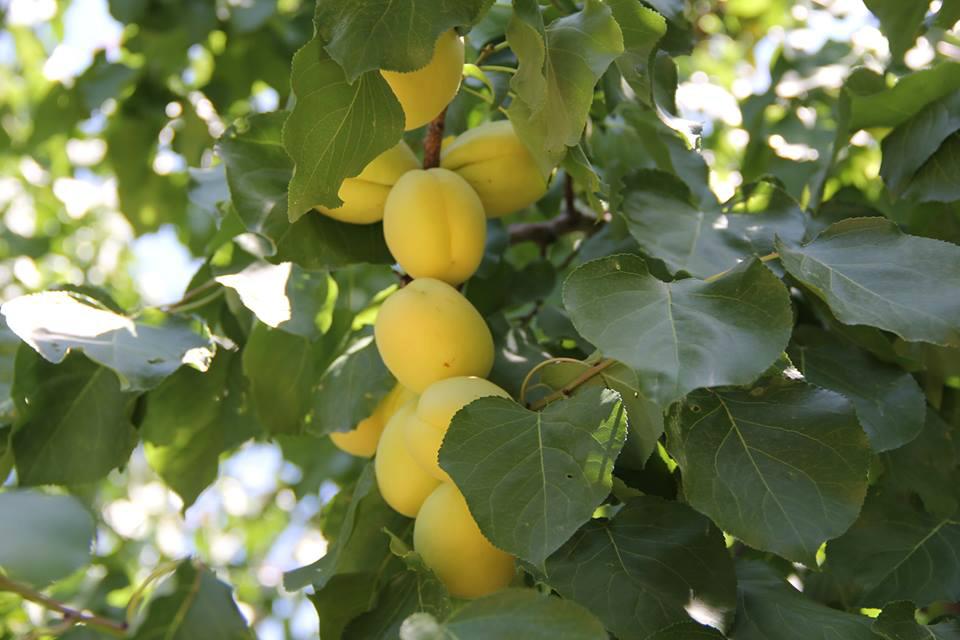
However, this year has turned out to be unfruitful for many farmers. Apricot trees in more than twenty communities of the district were affected by frost in early spring.
Contrarily, n some of the communities apricot trees were not damaged. It is safe to presume that the farmers who were got lucky with their harvest would not just sell their crops, but would also be able to set their own prices.
It turned out the other way round
Norik Harutyunyan’s apricot orchard takes up 1 hectare of land. This year he expects to harvest 5 tons of the crop, but he hasn’t sold even a kilogram yet.
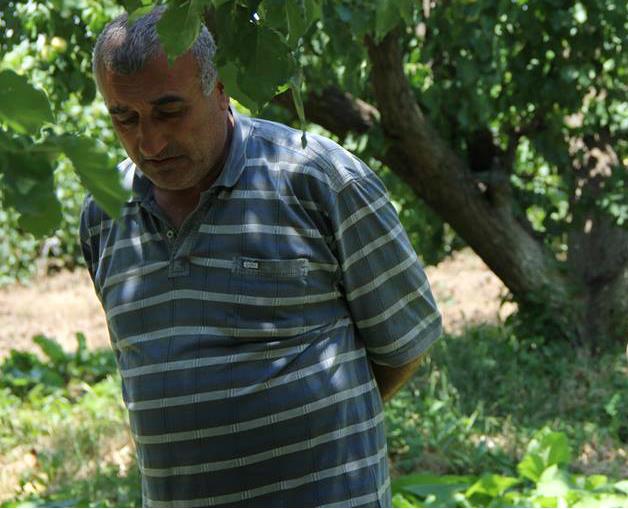
Nevertheless, Norik continues harvesting the crop. With the assistance of hired workers, he sorts the fruit that will be stored in the fridge at this point.
Karmen Karapetyan from Sardarapat has found himself in the same situation. He has gathered about two tons of apricots and is now looking for buyers.
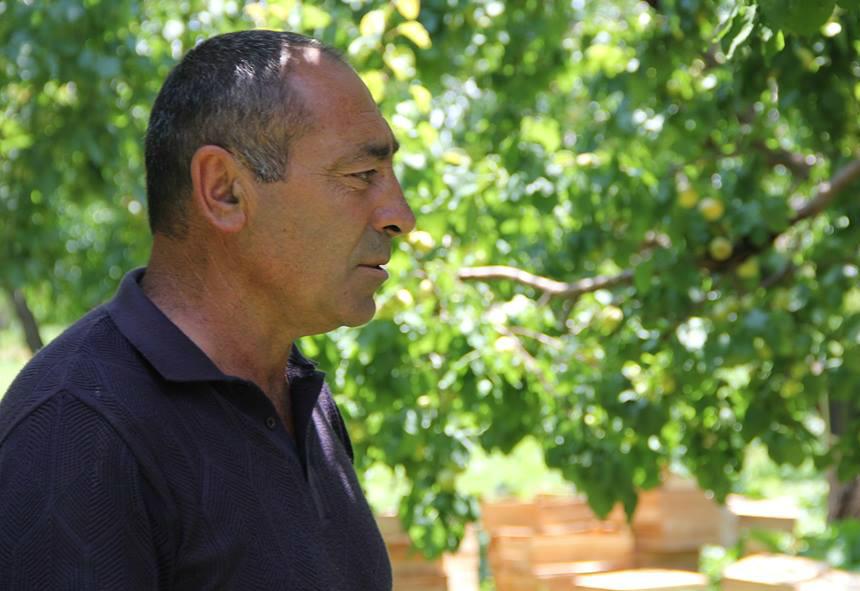
Harvesting of crops – sales
The day after the harvesting process began, the Agriculture Minister, Sergo Karapetyan stated that 5,600 tons of apricots had been already exported, that exceeded last year’s figure by almost two times. This year processing plants started accepting fruit a week earlier than usual.
The Agriculture Minister promised there wouldn’t be any problems with sales problems. In the early days of the harvesting process, a kilogram of apricots cost 500-700 AMD (about $1-1.50 US).
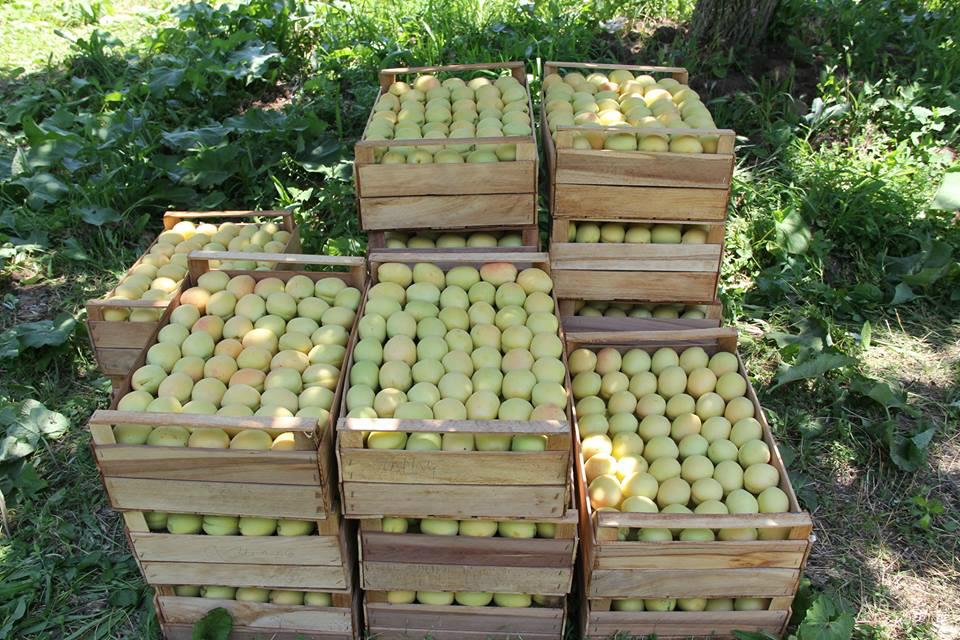
The mass harvesting of apricots in Armavir has already begun. This means that farmers will have just one week to sell their crops-it won’t be possible to sell overripe fruit, even at the domestic market.
Although the price of apricots has dropped twice, orchard owners are still unable to find buyers.
Even the preliminary agreements between the farmers and the exporters have been nulled and farmers have been left with their ripe apricots. The reason for this is that the Upper Lars checkpoint has been closed due to the landslides. The transportation of apricots by trucks through the Upper Lars checkpoint is the best option for exporters.
Whether it is coincidence or not, the pass through the Lars checkpoint was closed for 2 weeks during the same period last year. As a result, the harvesting process was suspended for a few days. Farmers lost a significant portion of their crop and they had to sell what remained to processing companies at 40-50 AMD (approximately $0.08-0.10 US) per kg.
Why don’t the farmers sell apricots to the processing companies anymore?
Last year Norik Harutyunyan had to queue at “Noyan juice plant for three days where he ended up selling apricots for only 50 AMD. After having paid his hired workers and covering transportation costs, he started calculating his ‘profit’ and realized that not only had he failed to earn anything, but he had lost money. His losses amounted to 18,000 AMD (approximately $40 US).
 25.06.2015
25.06.2015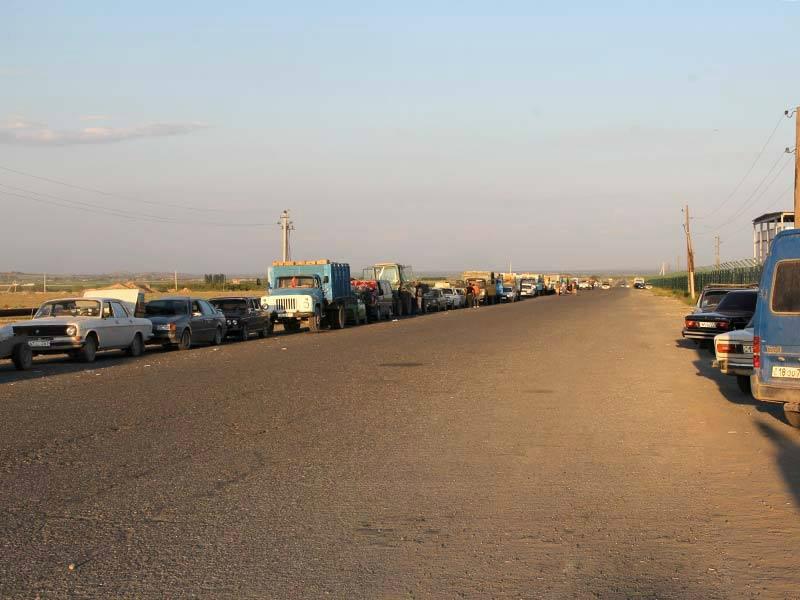
Karmen Karapetyan’s apricots went bad and became unfit even for processing after waiting in line outside the same plant in the hot weather. Karapetyan says he is not going to set himself up for the same fate this year.
“Noyan” juice plant, which had purchased about 3 million tons of apricots during the harvesting period in previous years, has been inactive so far.
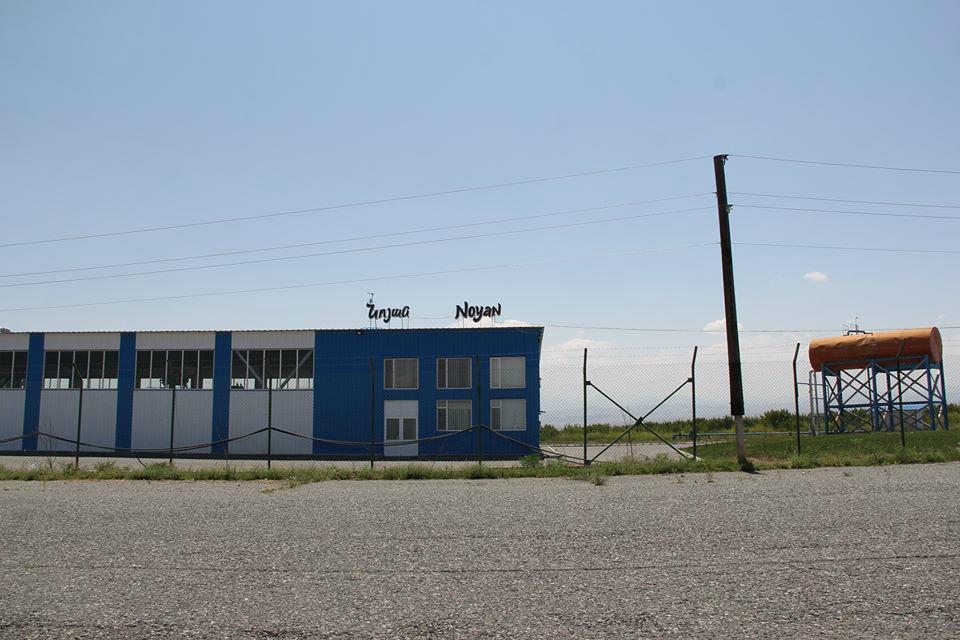 25.06.2016
25.06.2016The plant does not a sufficient amount of apricots to be able to work at full capacity. The plant has equipment capable of processing up to 15 tons of apricots per hour.
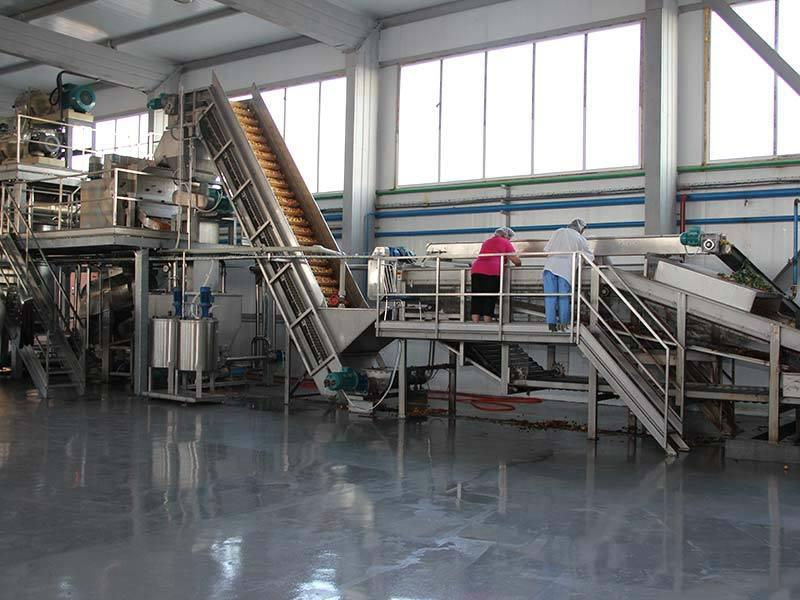 25.06.2015
25.06.2015Manufacturing plants are paying 60 AMD per kilo this year. That is 10 AMD more than the last year’s price. Despite this, there are few people who have the desire to sell apricots to them: some farmers have been left without any crops, while others, like Karmen, no longer want to deal with manufacturing plants.
 25.06.2015
25.06.2015Calculations
According to Norik Harutyunyan, a 1 ha apricot orchard can yield 10 tons of the crop in the best conditions. Ideally, you can receive 1-2 million AMD income (about $2,000-4,000 US) for this amount.
Expenses of one hectare of a garden are as follows: the apricot trees should be treated at least 4 times a year and the processing costs amount to 70,000-80,000 AMD (about $150-170 US). Also, 1 ha requires 300 kg of fertilizers, amounting to 42,000 AMD (approximately $90 US). Irrigation costs are 110 AMD (about $230 US), 15 workers who are hired each week for harvesting earn 6,000 AMD (approximately $12 US) each per day,which in total is 630,000 AMD (about $1,300 US) gone from his budget.
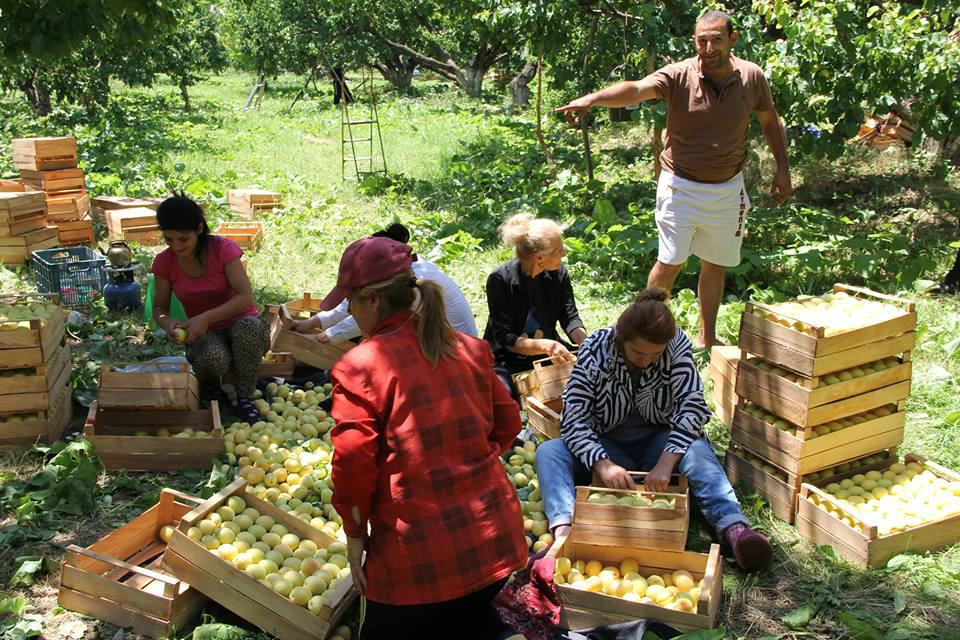
According to Norik’s calculations, 300,000 AMD (about $630 US) should be added to this amount for containers and transportation. In the end, the expenses per 1 hectare of apricots total 1.5 million AMD (about $3,000 US), and the prime cost is 150 AMD (about $0.30 US) per kilogram of apricots.
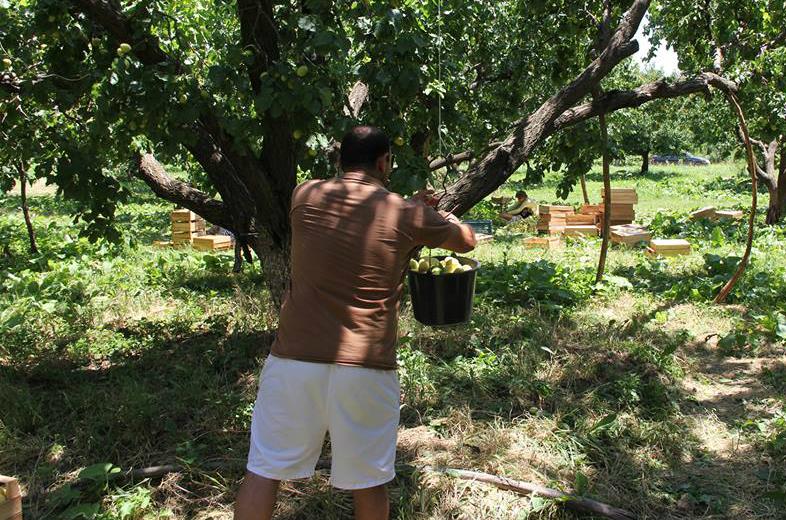
Norik says that when making the calculations he does not take into account the labor of four of his family members and the interest rates from agricultural loans. Based on Norik’s logic, it is better not to harvest the crop at all, rather than to spend money on harvesting and bring the crop to the processing plants at 60 AMD ($0.12 US).
Today Armavir district farmers’ primary concern is whether vehicle traffic will be opened through the Upper Lars checkpoint or not. The reason for this is that they have to pay 10,000 AMD ($20 US) a day per ton of products stored in refrigerators, which they have specially leased to help preserve their crops.
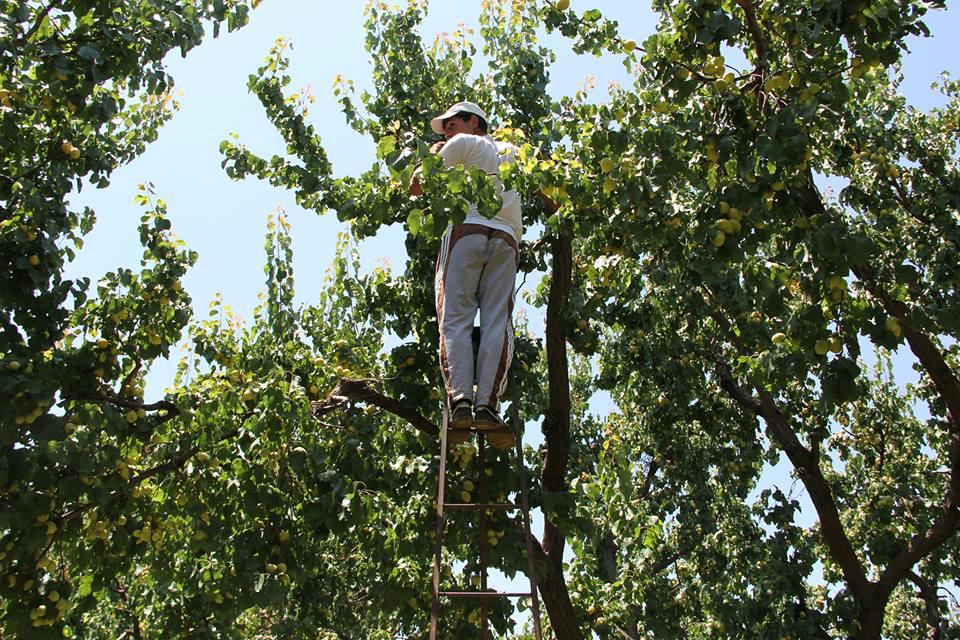
Norik and Karmen are not going to store their crops in a refrigerator for the time being, hoping that an exporter will show up either today or tomorrow. The exporters now offer 200-250 AMD per kg of apricots, a little bit more than their prime cost. At the local market, which is not that large, you can get 100-150 AMD per kilo.
Apricots and their farmers have a vague future ahead
The imagination of processing companies’ would excite any storyteller. They have set 3 prices for accepting apricots: they pay 60 AMD per kilo in cash on the day of submission, 70 AMD after a month has passed; and 80 AMD if they pay at the end of the year.

Artur Ayvazyan, the Head of the Agriculture Department of the district administration Armavir, reported that 56,000 tons of apricots were produced in 2015 and 12,000 tons were exported. This year the district of Armavir expects to harvest only one-fifth of last year’s yield. And only God knows what will happen to this amount.
Some information about the apricots
In the 1st century BC., the Roman commander, Lucullus, returning home after the war with the Armenian King, Tigran the Great, took apricot seedlings along with him to Rome, and they were planted there. Apricots were called ‘Armenian plum’ there.
One of the Arabic names for the apricot is ‘tufah al Armani”, which means ‘An Armenian apple’.
Armenian duduk (wooden flute) is made out of apricot wood.
In Armenia, apricots are mainly cultivated in Ararat valley, specifically in the districts of Armavir and Ararat.
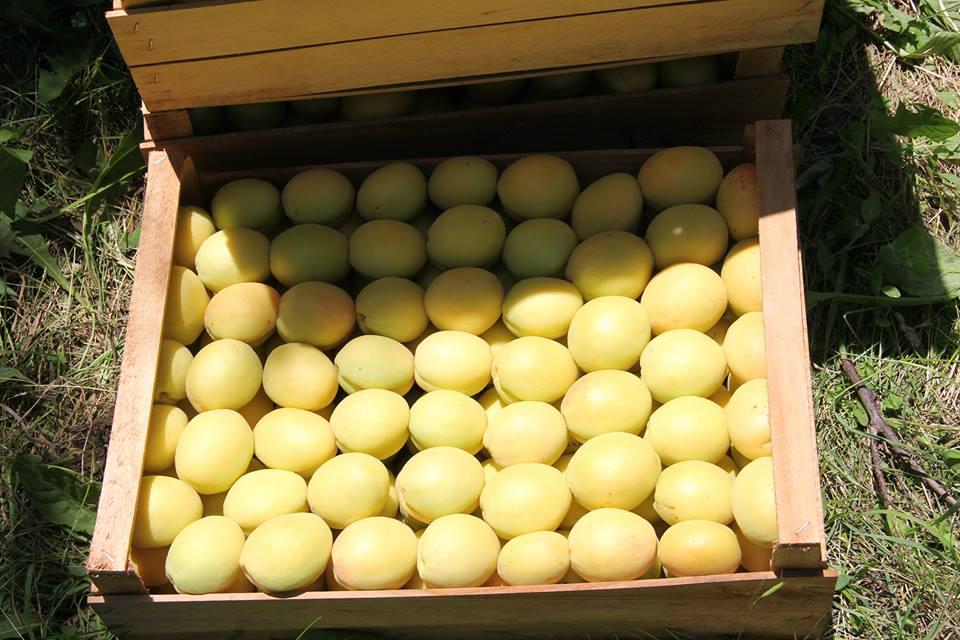
Published: 30.06.2016



















